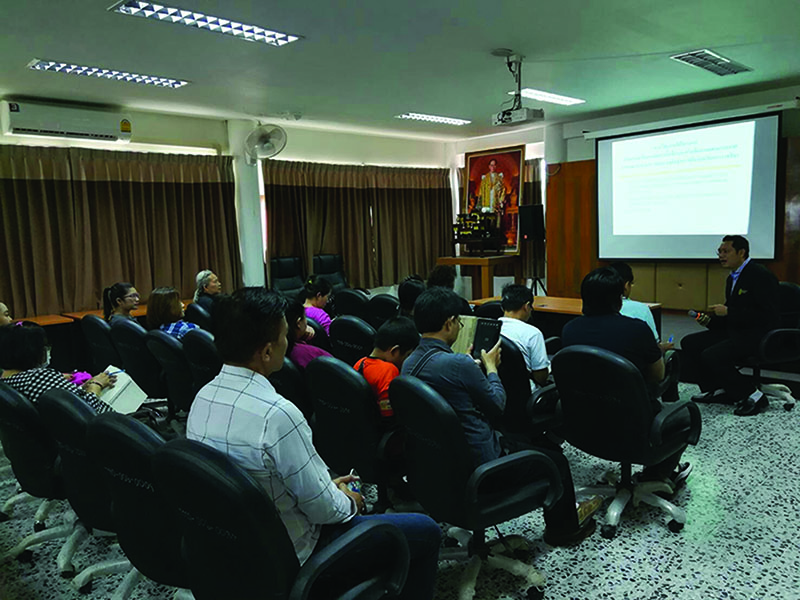Development of an E-Commerce System from a Requirement of the OTOP Entrepreneurs in Nakhon Ratchasima
Main Article Content
Abstract
This research aims to develop an E-commerce system from a requirement of the OTOP (One Tumbon One Product) distribution entrepreneurs in Nakhon Ratchasima. The sample set of this research is 15 OTOP entrepreneurs in Pakthongchai, Nakhon Ratchasima. In the development of E-commerce system, we develop a computer database as a relational database to store data that involve with OTOP products and develop a system as a website together with an Android mobile application. The design and development of an E-commerce system use the waterfall model integrate with the prototyping paradigm. When an E-commerce system was developed completely, we evaluated our E-commerce system by our sample set with an opinion questionnaire. From the results of evaluation, we found that the overview of evaluation was good. The issue of convenience to insert new product data has a minimum average score, it’s equal to 4.1. The issue of completeness to present a detail of data and the ability to alert order from customer have a maximum average score, it’s equal to 4.8. Therefore, we can conclude that an E-commerce system of this research meet with a requirement of the OTOP entrepreneurs.
Article Details
References
[2] The Knowledge Management Institute Foundation. (2017). The blueprint of Thailand 4.0, A Model to Impel Thailand to Sustainability and Sustainable Wealth. Access (17 December 2017). Available (https://www.libarts.up.ac.th/v2/img/Thailand-4.0.pdf)
[3] Kanjanasuwan, T. (2009). E-Commerce. Bangkok : KTP COMP & CONSULT.
[4] Chayavivatkul, P. (2004). E-Commerce. HCU Journal. Vol. 7, No. 14, pp. 61-69
[5] Aiamsririvong, O. (2013). E-Commerce (A Managerial Perspective). Bangkok: SE-ED Publishing.
[6] Royce, W. W. (1970). Managing the Development of Large Software Systems. In Proceedings of IEEE WESCON. pp. 1-9.
[7] Pressman, R. S. (2001). Software Engineering a Practitioner’s Approach. 5th ed. NY: Mc Grew Hill.
[8] Putjusamai, K. (2004). E-COMMERCE OTOP ONLINE. Bangkok: Rajabhat Chandrakasem University
[9] Janthatit, J., Vongvipusana, J., Lomaphom, P., Lemtae, M., Nuallert, S., and Chaisuriya, S. (2007). Development of Distribution Channels for OTOP Products by Using an E-commerce System, A Case Study: Products of Fish Scale from an Agriculture Housewife Group in Ban Bang Dan, Khao Roop Chang, Songkhla. Songkhla: Songkhla Rajabhat University
[10] Seelapan, W. (2007). Maha Sarakham OTOP Manufacturer’s Knowledge and Attitude Towards Electronics Commercial. Maha Sarakham: Rajabhat Maha Sarakham University.
[11] Trongwattanawuth, S. (2012). Success Factors in Doing Business on E-Commerce Systems of Entrepreneur in Chiang Mai Province. Chiang Mai: The Far Eastern University
[12] Suanpang, P. (2014). The Development E-Commerce Systems for Thai Tourism Industry. Bangkok: Suan Dusit Rajabhat University.

